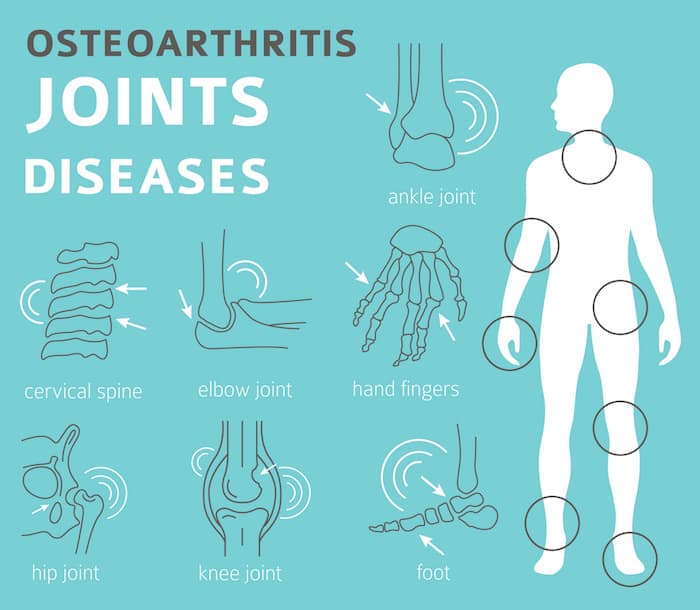Osteoarthritis is a type of arthritis caused by wear and tear on the bones. The symptoms of osteoarthritis can range from minor discomfort to life threatening situations. The condition affects the bones around the hip, knee, spine, hips, knees, ankle, wrist and fingers. Osteoarthritis usually causes some pain, swelling and stiffness in these areas. Osteoarthritis is generally associated with old age, but it can be seen in younger adults as well, especially if they engage in activities that cause high strain to the joints.
It usually occurs to the elderly and is known to affect one out of every four Americans. Some cases of osteoarthritis have no symptoms, but others can be very severe. If you suspect you may be experiencing osteoarthritis or any other kind of arthritis, you will want to visit an osteoarthritis doctor to go over any concerns you may have with a possible diagnosis or treatment.
There is no cure for osteoarthritis. However, there are ways you can manage the condition. An orthopedic doctor can recommend treatments and management strategies, including the use of medications, exercises, and physical therapy. A doctor will also advise you about the possible side effects of medications you are taking.
NSAIDs
Osteoarthritis can be classified as primary or secondary osteoarthritis. Primary osteoarthritis is the most common type of arthritis. In primary osteoarthritis, there is no obvious cause – it could be age, strain, or simply genetic predisposition. Symptoms of primary osteoarthritis include pain in the back, thigh, knee, and elbow.
Secondary osteoarthritis is when the cartilage has worn away from the joint where the joint was once. Sometimes it is possible to see the bones rubbing against each other as a result of this disease. As the disease advances, symptoms of this disease will become worse, and you may be unable to use the joint.
There are a number of treatments available for osteoarthritis. The most common treatment for osteoarthritis are non-steroidal anti-inflammatory drugs (NSAIDs), such as ibuprofen, naproxen, aspirin, and ketoprofen. NSAIDS are generally used for mild cases of osteoarthritis, such as mild arthritic conditions. They work by reducing inflammation and reducing pain.
The pain that is caused by osteoarthritis can be somewhat reduced by using NSAIDs, but they are not a cure. You will also need to make sure that you are eating an appropriate diet in order to prevent additional pain. You will also need to start an exercise routine if you want to maintain the mobility that you once had in your joints.

Exercise
The next step is to consider physical therapy, exercises for osteoarthritis, and generally staying active. The category of physical therapy you follow can vary greatly depending on what you, your doctor, and your physical therapist determine would be best for you. The most important factor here is that you have to stay active as this will likely slow the effects of your condition.
Supportive Devices
Regardless of your age, osteoarthritis can be quite damaging, and can inflict a variety of physical afflictions that make moving through day-to-day life more difficult than it would be otherwise. Sometimes, supportive devices, such as braces and canes, can help with the day-to-day function and alleviate some of the pain surrounding this condition.
Healthy Diet
One of the most important things that you can do to manage osteoarthritis is to eat a healthy diet. If you want to manage this painful condition, you have to make sure that you are eating right and doing the right exercises on a regular basis. It may take some time but, once your body gets used to doing these things, it will become easier to manage this condition.
There are many reasons why dietary changes can help you reduce the effects of osteoarthritis. A high fat, high protein diet can cause your body to release an excess of cortisol in order to protect your joints. When this happens, it causes the joints to become less flexible. This makes it harder for your body to move around and is one of the primary causes of osteoarthritis. By limiting the amount of saturated fats, trans fat, and refined sugar in your diet, you can help reduce the risks associated with osteoarthritis. In addition, you can also make dietary changes that can help you get manage osteoarthritis pain, based on health-conscious foods or healthy spices.
Conclusion
When dealing with the effects of osteoarthritis, it can be difficult to find ways to manage the pain. But, given enough time, it isn’t impossible. If you are concerned regarding this particular condition or want more information, consult your doctor for a referral to a specialist.
The Editorial Team at Healthcare Business Today is made up of skilled healthcare writers and experts, led by our managing editor, Daniel Casciato, who has over 25 years of experience in healthcare writing. Since 1998, we have produced compelling and informative content for numerous publications, establishing ourselves as a trusted resource for health and wellness information. We offer readers access to fresh health, medicine, science, and technology developments and the latest in patient news, emphasizing how these developments affect our lives.








